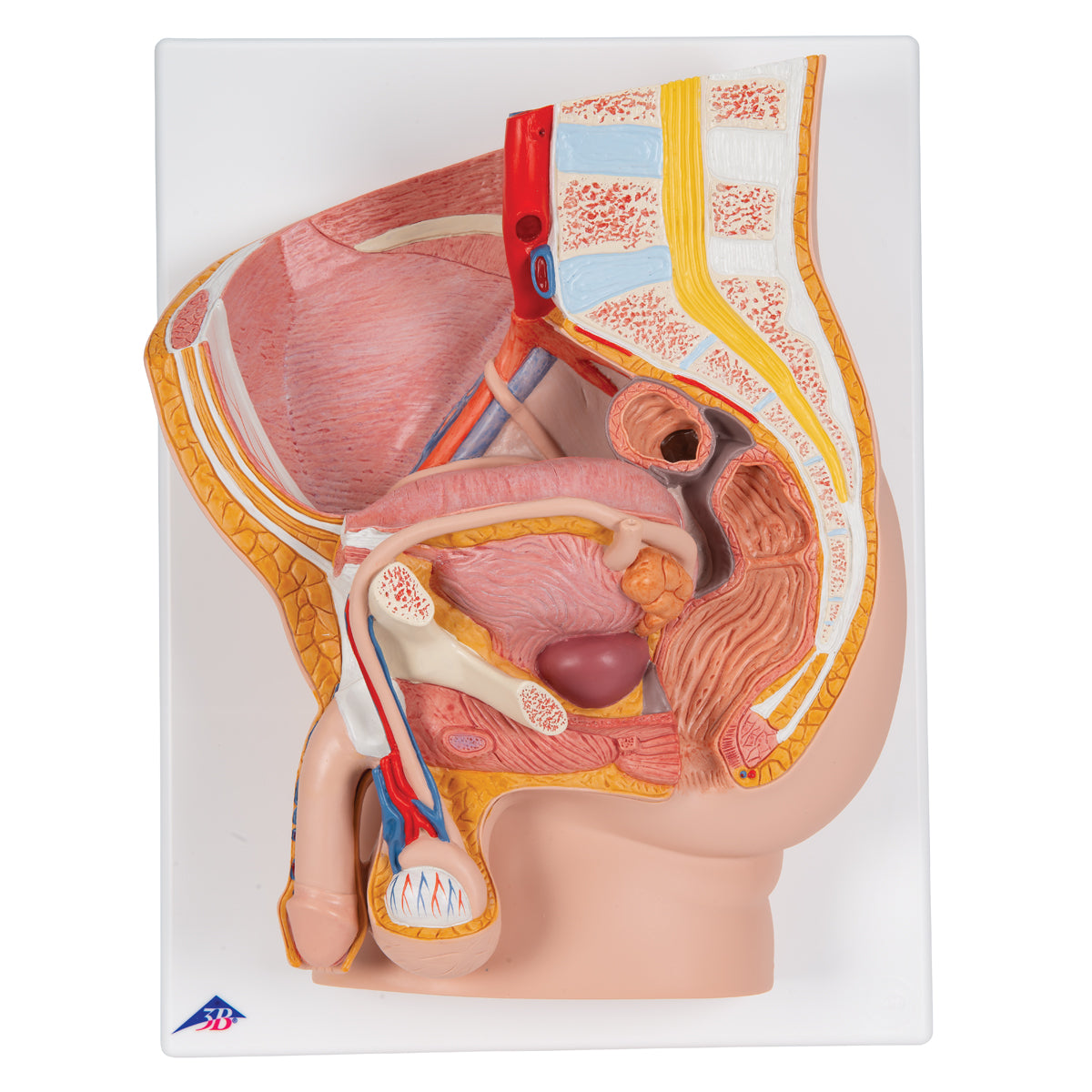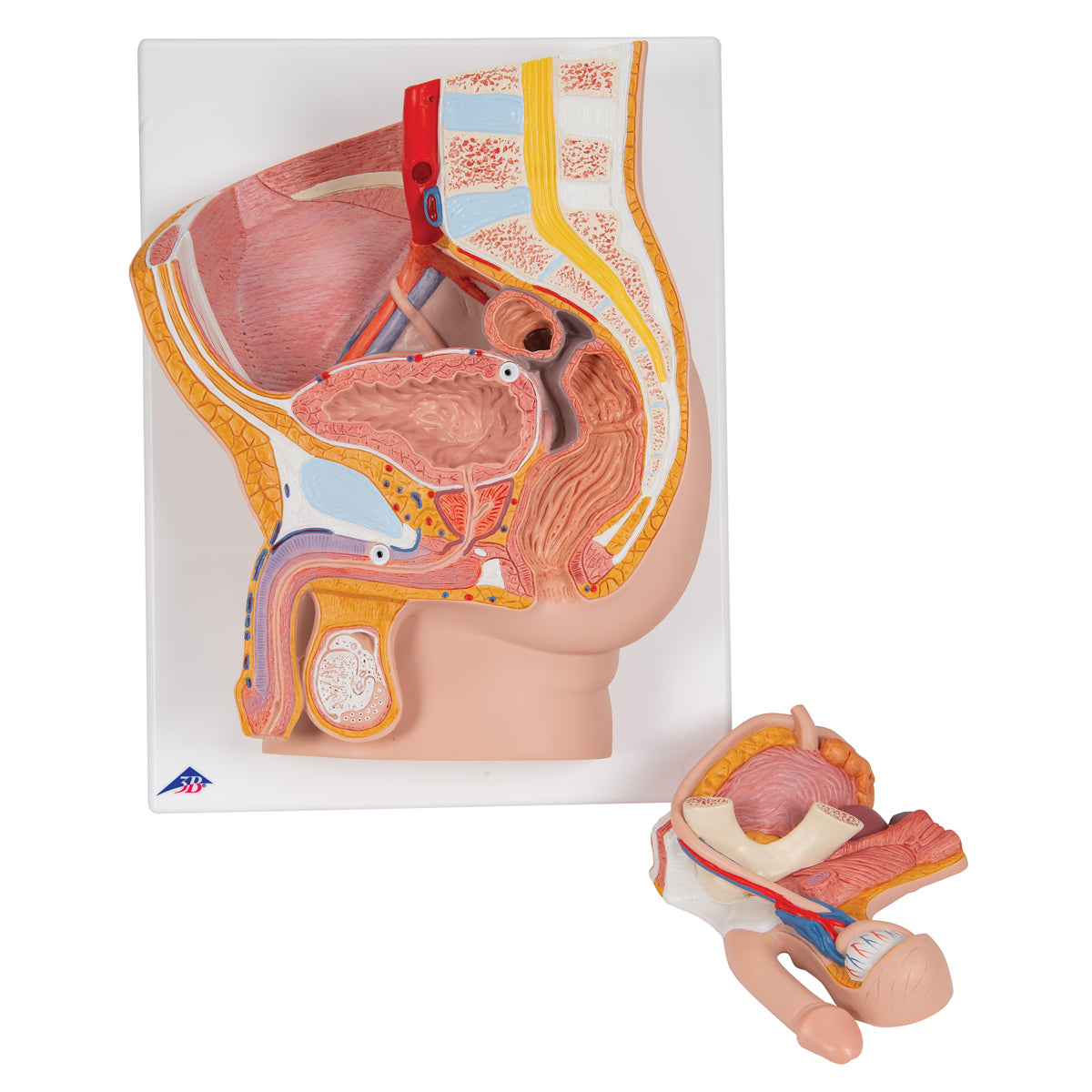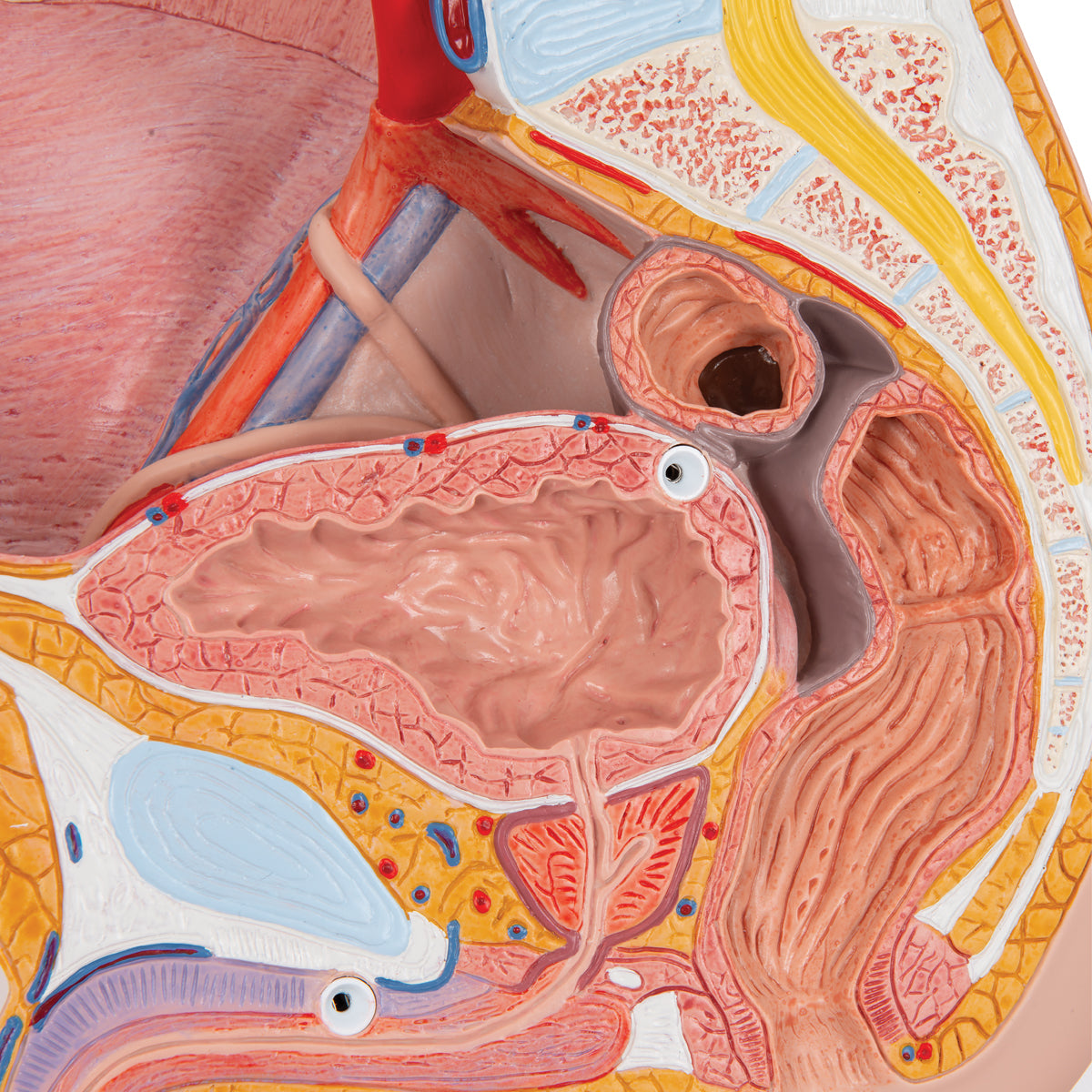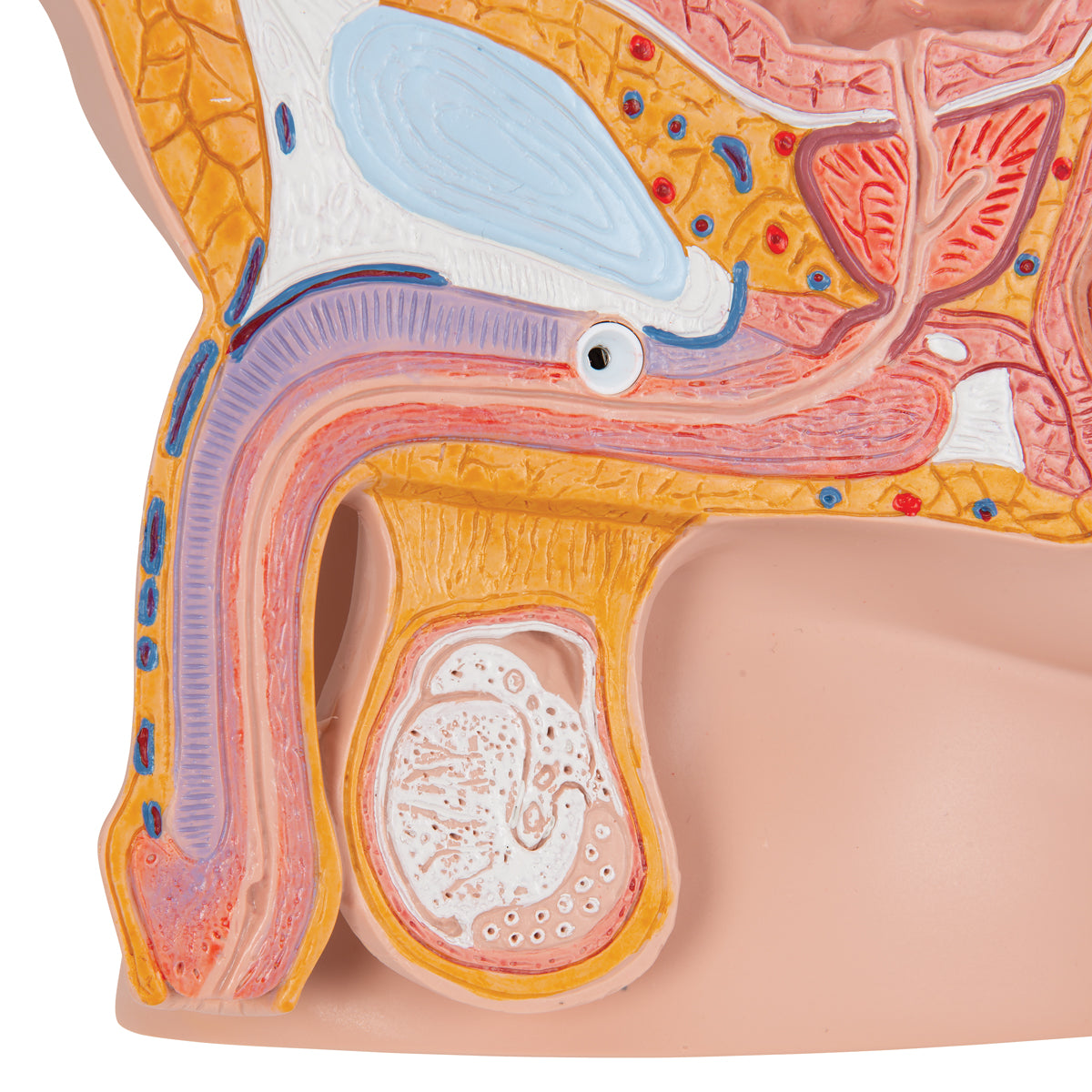SKU:EA1-1000282
Model of the male pelvis seen in a median section
Model of the male pelvis seen in a median section
ATTENTION! This item ships separately. The delivery time may vary.
Couldn't load pickup availability
This model shows the male pelvis in a median section. The model shows many different organs and tissues in an educational way.
It weighs 2.3 kg and the dimensions are 41 x 31 x 17 cm. A continuous piece of the model can be detached. The piece includes, among other things part of the penis, the scrotum, the prostate and the urinary bladder. Therefore, you can see both their outside and their inside in a median section (see the pictures on the left). The model is delivered on a stand. Overall, the whole thing has been developed to be able to hang on a wall or similar.
Anatomically speaking
Anatomically speaking
Anatomically, the model shows many different tissues and organs, some of which can be seen in 3 dimensions.
The pelvis (pelvic ring), which consists of bones and the pelvic floor, can only be seen on the model. For example, a cross-section of the symphysis (the front joint) is seen in the pelvic ring. On the other side, part of the large intestine (colon sigmoideum), the rectum (rectum), one ureter (ureter), the urinary bladder (vesica urinaria), the large artery and vein of the pelvis and parts of their branches can be seen. Ligaments are largely invisible, while nerves are not visible at all (however, the lower part of the spinal cord is visible).
Some tissues/organs are also seen in the horizontal plane (also called the transverse plane) when viewing the model "from above". Here you can see i.a. back and abdominal muscles as well as the kidney tissue in the right kidney. NB: All this cannot be seen in the images on the left but in the PDF file.
The internal genitalia include the testicles (testes) and the epididymides, which are seen in relation to the scrotum and the spermatic cord (funicle). The contents of the spermatic cord are clearly seen, while this is not the case for its stipules/leaves. In addition, the internal structures of one testicle can be seen - although not with small details.
The seminal ducts include the ductus deferens (the vas deferens), the ductus ejaculatorius and the urethra masculinum (the urethra), all of which are visible (the ductus ejaculatorius can only be felt).
In relation to the accessory gonads, the prostate (bladder neck gland) and vesiculae seminales (seminal vesicles) are seen, but not gll. bulbourethrales and etc. urethral. The export corridors and their connection can only be guessed.
The external genitalia include the penis and the scrotum, which are also seen. The internal structure of the penis is also seen in small details.
Many of the pelvic organs function as a channel or a reservoir (e.g. the rectum and the urinary bladder), which is why they are seen in a pedagogical way with an air-filled cavity (cavity).
Flexibility
Flexibility
In terms of movement, the pelvis is not flexible. The few joints that are visible are not movable.
Clinically speaking
Clinically speaking
Clinically speaking, the model can be used to understand diseases and disorders in the man's pelvis - for example in the genitals, the urinary bladder or the rectum. Examples are torsio testis, benign space-filling processes in the scrotum, urethral stricture, anal fistula, anal fissure, BPH (benign prostatic hyperplasia), prostate cancer and testicular cancer.
Furthermore, the model can be used to understand disorders and diseases such as stones in the ureter and deep vein thrombosis (DVT) in the pelvis.
Share a link to this product





A safe transaction
For 19 years I have been managing eAnatomi and sold anatomical models and posters to 'almost everyone' who has anything to do with anatomi in Scandinavia and abroad. When you place your order with eAnatomi, you place your order with me and I personally guarantee a safe transaction.
Christian Birksø
Owner and founder of eAnatomi and Anatomic Aesthetics




